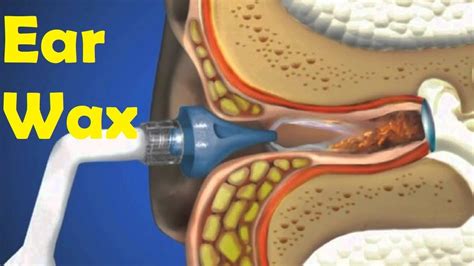How to Get Wax Out of Your Ear Safely and Effectively
Earwax, or cerumen, is a naturally occurring substance that protects your ears. However, excessive buildup can lead to discomfort, hearing loss, and even infection. While you might be tempted to reach for a cotton swab, that's actually one of the worst things you can do! This guide will explain safe and effective methods for removing excess earwax.
Understanding Earwax Buildup
Before we dive into removal methods, it's crucial to understand why you might have excessive earwax. Several factors contribute:
- Narrow ear canals: Individuals with naturally narrow ear canals are more prone to blockages.
- Hairy ear canals: Hair can trap wax and debris, leading to buildup.
- Use of earplugs or hearing aids: These devices can impede the natural process of earwax migration.
- Over-cleaning: Ironically, attempting to clean your ears too frequently can push wax further into the canal.
Important Note: Never insert anything small and sharp into your ear canal, such as cotton swabs, bobby pins, or toothpicks. This can damage your eardrum and cause serious injury.
Safe and Effective Earwax Removal Methods
Here are several approaches you can try at home:
1. Softening the Wax
The first step in removing earwax is often softening it. This makes it easier to dislodge and drain naturally. You can try these methods:
- Warm Water: Gently flush your ear with warm water during your shower. The warm water helps soften the wax. Do not use a forceful stream.
- Hydrogen Peroxide (3% solution): A few drops of hydrogen peroxide (3% solution) can be used, but only if you’re comfortable with this method and under the guidance of a medical professional. This solution can cause irritation in some people.
- Mineral Oil or Baby Oil: Place a few drops of warm mineral oil or baby oil into your ear canal. Allow it to sit for a few minutes before gently tilting your head to allow the oil and softened wax to drain.
2. Natural Removal
Once the wax is softened, your body may naturally remove it. Consider these options:
- Gravity: Tilt your head to allow softened wax to drain.
- Gentle Irrigation (if comfortable): Use a bulb syringe with warm water to gently flush your ear. Always consult a medical professional before trying this method, especially if you have concerns about eardrum damage.
3. When to See a Doctor
While home remedies are often sufficient, there are instances when you should seek professional help:
- Significant hearing loss: If you experience a sudden or substantial decrease in hearing.
- Severe pain or discomfort: Intense ear pain indicates a potential problem.
- Ear infection symptoms: Symptoms like fever, pus, or redness around the ear require immediate medical attention.
- No improvement after home remedies: If you've tried home methods and the wax buildup persists or worsens.
Your doctor may perform ear irrigation or use specialized instruments to safely remove the wax.
Preventing Future Buildup
Preventing future earwax buildup is key. Here's how:
- Avoid cotton swabs: Resist the urge to clean your ears with cotton swabs.
- Gentle cleaning of the outer ear: Use a damp cloth to gently wipe the outer ear.
- Consult your doctor: Discuss any concerns about earwax with your physician.
By following these guidelines, you can effectively manage earwax buildup and maintain healthy ears. Remember, prevention is key, and seeking professional help when necessary is crucial for your ear health.
